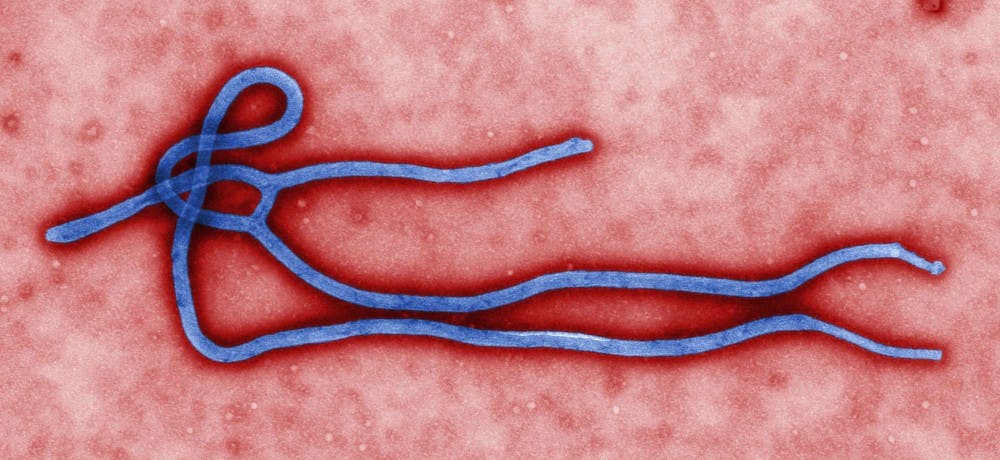More than 200 lives have been lost to the most recent Ebola epidemic in West Africa, making this outbreak the worst on record since the initial identification of the disease in 1976.
The World Health Organization released information about the outbreak March 23, saying it had caused the death of 29 people in Guinea. The outbreak then spread to Sierra Leone and Liberia, where the death toll has continued to climb at a rapid rate.
Ebola virus disease causes haemorrhagic fever and it has a fatality rate as high as 90 percent. The virus is transmitted to humans through wild animals, mainly fruit bats, which are thought to serve as the natural host of the virus. Once infected, a human can only transmit the disease through bodily secretions.
The White lab at the Medical School is taking steps to combat the deadly virus by developing an understanding of how the virus enters a cell.
“Ebola virus is in a race against the clock when it gets into the cell,” said Dr. Jason Shoemaker, a fellow who worked in Dr. Judith White’s lab. “We want to lock the door on it,”
The earlier in the cell pathway the virus can be stopped, he said, the better.
The ebola virus fuses with the endosome membrane by using a fusion peptide, a segment of protein that serves as a type of hook and reel to snag the cell membrane and pull it inward in the initiation of fusion.
“Our study focuses on the details of the mechanism of the process of membrane fusion,” White said. “We look for inhibitors to block the various steps of the entry process — we would like to block the earliest steps if possible.”
The White lab is currently collaborating with the Tamm and Kasson labs to further understand the fusion mechanism of the virus.
“I’ve been working on inhibitors to block the cell pathways used by the virus — for example, the fusion of the virus,” White said.
In a collaborative effort assisted by the White lab, it has been shown that the drugs clomiphene (used to treat female infertility) and toremifene (used to treat breast cancer) can effectively block Ebola-diseased mice. The drug prevents the viral RNA from entering the cell, causing the virus to be degraded and be removed from the body.
First identified by the biopharmaceutical company, Zalicus, and the U.S. Army Medical Research Institute of Infectious Diseases, the drug investigation was turned over to the University to analyze the drugs’ interactions with cellular pathways. The University team found that the drugs prevent the virus from fusing with endosome membranes in the targeted cells, making the infectious viral RNA isolated and ineffective.
The work of the White lab offers substantive progress on effectively combatting the Ebola virus.
“There is a lot about Ebola viruses that is very strange compared to other viruses,” Shoemaker said. “Any work that helps uncover more information about the viral entry pathway is helpful.”







